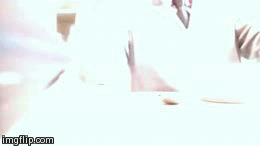Hardware
1. Camera
The camera was equipped with a tripod and a shotgun mic:
2. Tripod
The tripod was essential to keep our shots steady and was easy to adjust so we could get the right height and angle. It also wasn't too difficult to take on location when it was folded up and put away in the tripod bag.
3. Shotgun mic
The shotgun mic looked like this:
I learned how to attach it to the camera, but there wasn't much else to learn from it since once it was attached we didn't have to do anything else.
4. Lighting kit
 |
| (we didn't use the lighting kit for the test shoot) |
Software
We used Adobe Premiere Pro for both our planning and post-production. I had used this before when we made our preliminary task, but for this project we used it to achieve a lot more because we had higher standards.
Pre-production: the animatic
We used Adobe Premiere Pro for the first time on this project when we made our animatic.
We have already posted our animatic on this blog (http://latymermedia2013filmgroup3.blogspot.co.uk/2014/02/reflections-on-animatic.html), but it's here again:
Premiere Pro allowed us to easily place the photographs on a timeline. This made it easier when it came to the rough edit as we could simply place clips where the animatic shots were. Also, using this software we could get an idea as to what the opening would look like in a way that we couldn't have done if we had simply made a storyboard/shootboard.
Post-production: editing
Post-production: editing
The layout of Premiere Pro was, for the most part, easy to navigate.
The timeline had multiple tracks, which made it easier when editing because we could easily edit each shot individually, and could place shots we weren't sure about on another track before moving it back. We learned how to select and capture clips and could drag this footage from the top-right corner onto the timeline. We also learned how to create bins, which helped us to organise our footage.
We benefitted from hardware when editing, too - the computer we used had two screens so we could keep watching what we had done in full screen, to see how it looked so far.
For grading and colour correction we used Procamp and three-way colour corrector. We had used Procamp briefly for the preliminary task but we had never used three-way colour corrector before.
 |
| Three-way colour corrector |
ADVANTAGES
1. Allowed us to grade the shots so the colouring was better - as a result they looked more professional and more conventional of the genre
LIMITATIONS
What I found challenging with the technology (hardware and software) was remembering how to use it. After it was explained I would get confused and immediately forget, but it wasn't really a problem because Brandon could explain it again.
Planning, production and post-production: communicating
It was essential that we communicated as a group to ensure that we both knew what we were doing and what needed to be done. If our group had been larger it would have been useful to start a Facebook group for sharing information, but since our group had only two people it was perfectly fine to communicate just by text.
1. Time-taking
2. It was difficult to get the colours to be exactly the same for each shot, because the lighting was slightly different in each shot
Despite the difficulties, I learned about the importance of grading footage as our opening shows it really made a difference:
 |
| Before grading |
 |
| After grading |
We learned how to edit sound using Adobe Audition.
I did not understand this at all, so Brandon did most of the sound editing.
ADVANTAGES
It was useful for recording Christopher's voiceover, which we recorded after we had edited the footage together. Brandon could watch the opening at the same time to ensure that the voiceover matched with the right clips:
LIMITATIONS
Our main problem was the sound in the conversation at the end. We needed the audience to hear the dialogue. Unfortunately, the background noise was far too loud and not continuous - in one shot you can hear an accordion playing in the background and in the next shot it isn't there. Although we tried to fix this problem we realised there was nothing we could do.
If we were to make this again, I would make sure that we would shoot somewhere quieter if we had to film outside.
Planning, production and post-production: communicating
It was essential that we communicated as a group to ensure that we both knew what we were doing and what needed to be done. If our group had been larger it would have been useful to start a Facebook group for sharing information, but since our group had only two people it was perfectly fine to communicate just by text.















































.gif)




